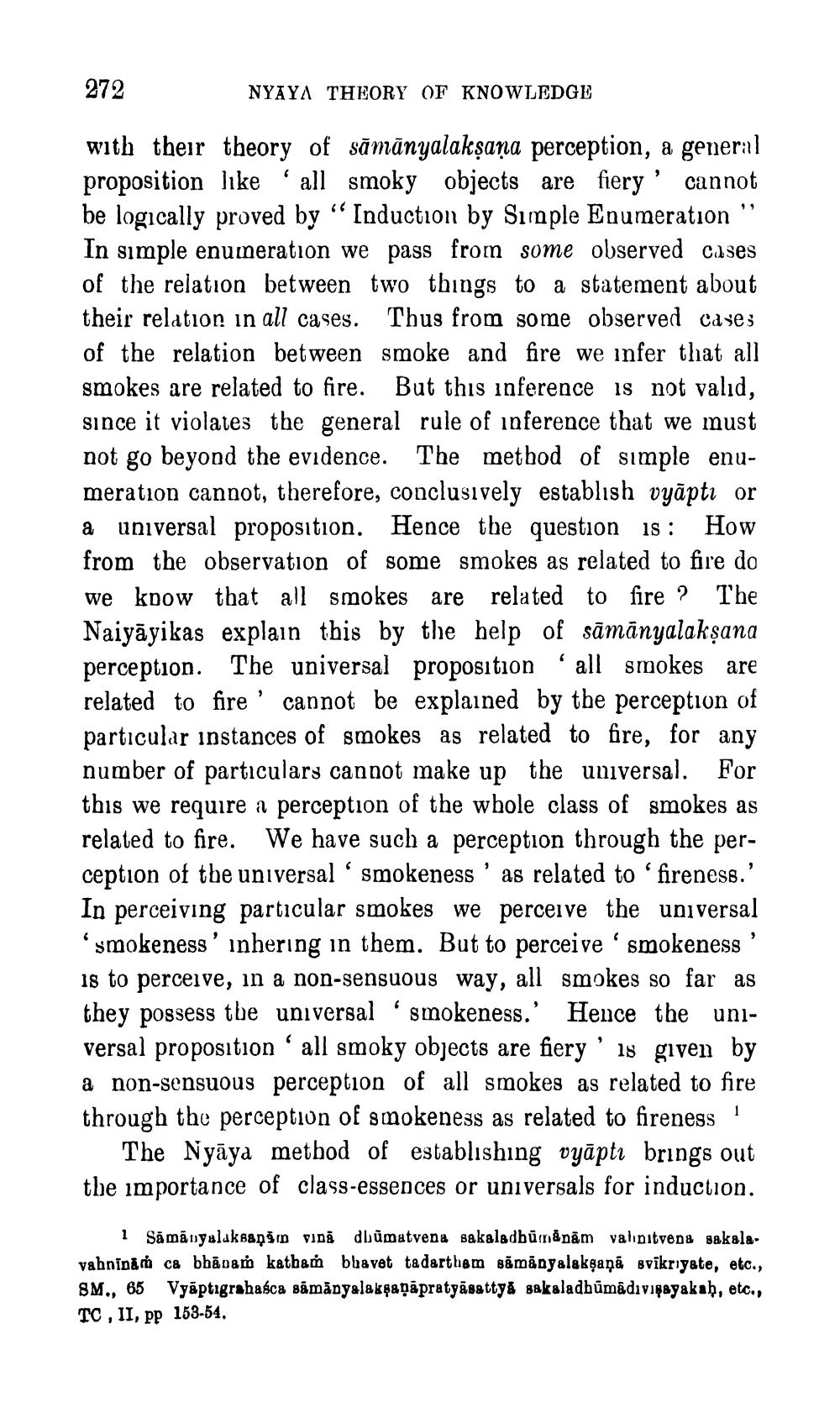________________
272
NYAYA THEORY OF KNOWLEDGE
with their theory of sămânyalaksana perception, a general proposition like 'all smoky objects are fiery' cannot be logically proved by " Induction by Simple Enumeration" In simple enumeration we pass from some observed cases of the relation between two things to a statement about their relation in all cases. Thus from some observed cases of the relation between smoke and fire we infer that all smokes are related to fire. But this inference is not valid, since it violates the general rule of inference that we must not go beyond the evidence. The method of simple enumeration cannot, therefore, conclusively establish vyāptı or a universal proposition. Hence the question is: How from the observation of some smokes as related to fire do we know that all smokes are related to fire? The Naiyāyikas explain this by the help of sāmānyalaksana perception. The universal proposition all smokes are related to fire cannot be explained by the perception of particular instances of smokes as related to fire, for any number of particulars cannot make up the universal. For this we require a perception of the whole class of smokes as related to fire. We have such a perception through the perception of the universal ' smokeness' as related to 'fireness.' In perceiving particular smokes we perceive the universal
smokeness' inhering in them. But to perceive 'smokeness' is to perceive, in a non-sensuous way, all smokes so far as they possess the universal 'smokeness. Hence the universal proposition 'all smoky objects are fiery ' 18 given by a non-sensuous perception of all smokes as related to fire through the perception of smokeness as related to fireness !
The Nyāya method of establishing vyāpti brings out the importance of class-essences or universals for induction.
1 Sāmāyalakbanin vină dbúmutvena sakaladhūmānām validitvena sakalavahnini ca bhāpam katha bhavet tadarthem sãmânyalakşaņā svikriyate, etc., SM., 65 Vyaptigrahasca sámányalaksaņāpratyāgattyå sakaladhūmadivinayakah, etc., TC, II, pp 153-54.




